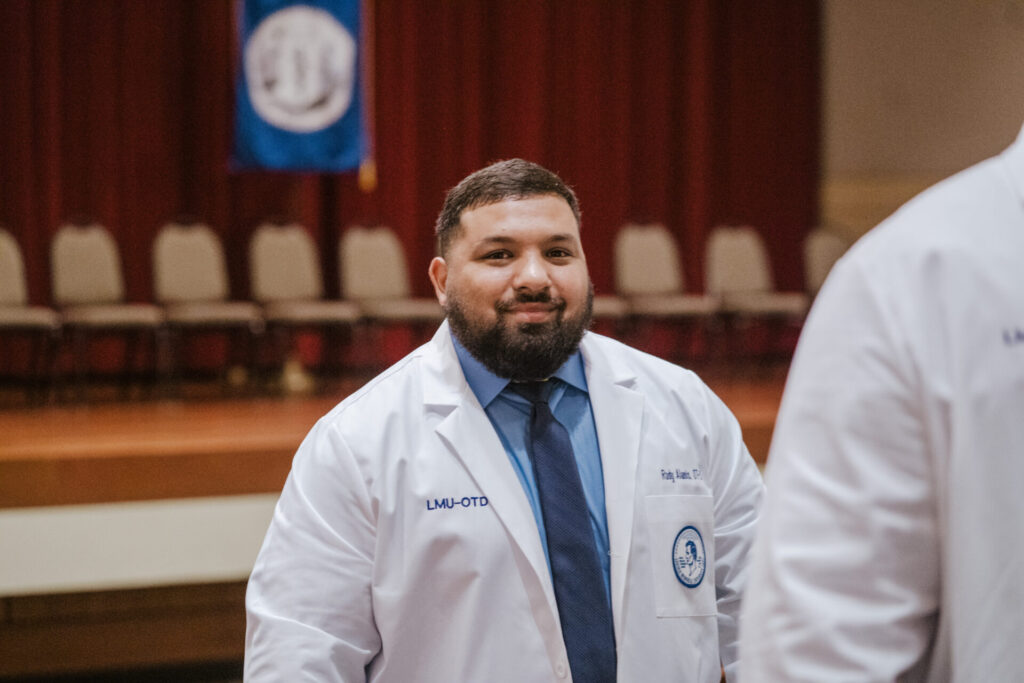- Find a DoctorDoctors by Specialty
- Cardiac Electrophysiology
- Cardiology
- Colon & Rectal Surgery
- Family Medicine
- Gastroenterology
- General & Vascular Surgery
- Gynecological Oncology
- Gynecology
- Infectious Disease
- Internal Medicine
- Interventional Cardiology
- Interventional Radiology
- Nephrology
- Neurology
- Neurosurgery
- Obstetrics & Gynecology
- Oncology
- Oncology & Hematology
- Orthopedic Surgery
- Otolaryngology
- Perinatology
- Psychiatry
- Pulmonary Medicine
- Radiation Oncology
- Rheumatology
- Sleep Medicine
- Thoracic Surgery
- Urology
- View All Doctors
- Our ServicesMedical Services
- Bariatric Services
- Behavioral & Mental Health
- Breast Care
- Cancer Care
- Critical Care
- Ear, Nose, & Throat
- Emergency Services
- Gastroenterology
- Glossary
- Heart Care
- Home Care
- Hospice & Palliative Care
- Imaging & Diagnostics
- Long-Term Care
- Nephrology
- Orthopedics
- Primary Care
- Rehabilitation Therapies
- Robotic-Assisted Surgery
- Sleep Services
- Spine Care
- Stroke Care
- Surgery Services
- Telehealth Services
- Urology
- Urgent Care
- Virtual Urgent Care
- Women’s Services
- Wound Care
- Our Locations
- Patients & Visitors
- About Us
LeConte’s Healthy Lifestyles is a health and wellness publication printed twice a month in local newspapers serving Sevier County and South Knoxville. And here online! We hope you find this information healthful.
Table of Contents
“Newcomers” Grateful for Their New Hometown Hospital
Cardiac Services Available at LeConte Medical Center
No Rest for the Weary
8 Criteria for Diagnosing Systemic Exertion Intolerance Disease
A New Name for an Old Problem
Jump Start Your Energy
Bottoms Up or Bottoming Out?
Fort Sanders Comprehensive Stroke Re-Certification Good for All
Recognizing the Signs of a Stroke FAST
“Tele-Stroke” Robot Helps Patients Get Quicker Access to Care
Download this edition
“Newcomers” Grateful for Their New Hometown Hospital

It was July 2014. The moving van had arrived and Chris Tatum, 60, was ready. He was loading up for a new adventure in East Tennessee with his wife, Rhonda, and his two youngest children.
While he was excited about moving, Tatum was surprised that it was so hard. He was exhausted, his chest hurt, and he was having a little trouble breathing.
Tatum didn’t know it at the time, but that was the first sign something was wrong with his heart. When autumn came, he developed a cough that he couldn’t shake.
Rhonda Tatum talked her husband into making an appointment with local doctor Charles Bozeman, MD, who ruled out pneumonia, bronchitis, and allergies. However, Dr. Bozeman did find fluid around Tatum’s heart. Medication was prescribed, and it was recommended that Tatum see a cardiologist.
But he had the holidays ahead, and decided to wait. On Thanksgiving Day he began experiencing that familiar exhaustion, and there was sharp pain in his chest. Still, he waited.
At the urging of his wife, Tatum finally went to see LeConte Medical Center cardiologist Roger Riedel, MD, in January. Dr. Riedel saw very plainly that all test results had come back negative, but rather than dismiss Tatum, the cardiologist took into account the fact that he was a diabetic, and called for more testing.
“He said for my peace of mind, and for his peace of mind he wanted to do a heart cath,” Tatum says.
In catheterization, a tube is inserted in an artery or vein in the groin, neck or arm and threaded through blood vessels to the heart. Using the catheter, doctors can perform better diagnostic tests.
The heart cath, performed at LeConte Medical Center, revealed blockages in six arteries. Tatum learned that he had been experiencing mild heart attacks for almost six months.

“Dr. Riedel saved my life,” Tatum says bluntly. “He was the one who made the call, just for peace of mind, to do that heart cath.”
Because LeConte Medical Center is a member of Covenant Health and part of a network of East Tennessee hospitals, Dr. Riedel was able to quickly connect Tatum with surgeons at Parkwest Medical Center in Knoxville for bypass surgery.
Surgeon Lacy Harville, MD, made the decision to leave three of the blockages untouched, because too much work at once might elevate the heart disease. Those three remaining areas had 30 percent blockage, and there was reason to hope the arteries might clear themselves without surgery.
The surgery was successful, and he soon found himself in cardiac rehabilitation at LeConte Medical Center. “Oh, boy,” he says, “those people are wonderful!”
Following the instructions of the cardiac rehabilitation team, Tatum was soon feeling like himself again. His energy level was up and he was enjoying life with Rhonda and his daughters.
But a few months after the surgery, Chris started having some familiar problems. “It just hit me all of a sudden,” he says. “I got real tired and fatigued, and my chest hurt a little bit.”
Tatum tried to hide it, but his wife could tell something was wrong. “He was raring to go, and then – boom – he’s back down, again,” she says.
Tatum finally admitted that he needed to see Dr. Riedel. After another heart cath, Dr. Riedel explained that Tatum would need a stent for a blockage found behind the heart. Dr. Riedel performed the procedure successfully in June of this year.
“Dr. Riedel is an excellent doctor,” says Rhonda. “He listened, he took the time to explain everything to me, and he was just very thorough.”
A full year has passed since Tatum experienced his first chest pains while preparing for his move to Sevierville. It hasn’t been an easy year, but it’s been a transformational one.
“I’m all new, again,” he says. “I feel good, I’ve got God in my life, my faith is strong, and I just thank the Lord for what I have.”
One of the things Tatum is thankful for is that he had such great care through the physicians, facilities, and services of Covenant Health and LeConte Medical Center. “The hospitals are just the best I’ve ever been in,” he says. “I’ve never had a bad experience.”
Rhonda agrees, “I’ve worked in cardiology as a nurse, and if I knew something was wrong with any of my family members, I would send them right to Dr. Riedel.”
“And, man, I’m well,” Tatum says. “I am feeling good. I finally got it back, and we’re loving life.”
Cardiac Services Available at LeConte Medical Center
Cardiac Calcium Scoring: Coronary calcium scans use computed tomography (CT Scan) to check for the buildup of calcium in plaque on the walls of the arteries of the heart (coronary arteries). This test is used to check for heart disease in an early stage and to determine how severe it is.
Cardiac Catheterization: A cardiac catheterization, also known as coronary angiogram, is a procedure that assesses blood flow to the heart. During the procedure a small catheter is inserted into the heart with the aid of a special X-ray machine. X-ray dye is then injected through the catheter and into the heart to visualize the valves, heart chambers, and coronary arteries.
Cardiac Stress Test: A cardiac stress test helps physicians check the condition of the heart by assessing blood flow and muscle activity during physical exertion.
Cardiologists: LeConte Cardiology Associates and Knoxville Heart Group are highly trained cardiologists and professionals available to provide excellent cardiac care to the residents of Sevier County.
Cardiopulmonary Rehabilitation: The cardiopulmonary rehabilitation program at LeConte Medical Center has received national certification from the American Association of Cardiovascular and Pulmonary Rehabilitation (AACVPR).
The program is medically supervised to safely restore physical fitness and function for people who have recently had serious cardiac or pulmonary events. The goal is to help our patients regain confidence in exercising their hearts and lungs through a structured and supervised program, while assisting them to develop healthy lifestyle habits that reduce the risk of further complications from heart and lung disease.
Echocardiography (Adult Only): An echocardiogram is a diagnostic test that uses ultrasound waves to create an image of the heart. This test can show the size, shape, and movement of the heart’s valves and chambers as well as the flow of blood through the heart. Echocardiography may show abnormalities such as poorly functioning heart valves or damage to the heart tissue from a past heart attack.
Emergency Department: Medical care available 24 hours a day, 7 days a week to treat cardiac emergencies.
Pacemaker Insertion: A pacemaker insertion is the implantation of a small electronic device in the chest to help regulate the beating of the heart.
Transesophogeal Echocardiography: Transesophogeal echocardiography, also known as TEE, is a diagnostic procedure in which an ultrasound transducer is guided down the patient’s throat into the esophagus. Images of the heart are then produced using sound waves.
No Rest for the Weary
When nurse practitioner Amy Greene at Great Smokies Family Medicine finds out that a patient is suffering complete exhaustion for no apparent reason, the detective work begins. Systemic exertion intolerance disease (better known as chronic fatigue syndrome), is difficult to diagnose, and comes in many forms.
“It’s an abnormal fatigue syndrome,” Greene explains. “What you do to diagnose chronic fatigue syndrome is rule out other possible causes.”
Part of the problem is that so many other diseases can cause similar symptoms. There are currently no tests available for a positive diagnosis, so doctors and clinicians wade through the symptoms until they can pinpoint what is causing them.
The most classic symptom is exhaustion even after eight hours of sleep. There is literally no rest for the weary.
Greene says there are now eight criteria for diagnosing systemic exertion intolerance disease. Any combination of symptoms can indicate a problem. While there is no common cause and the disease can occur on its own, it usually ends up being associated with some other disorder.
“High on the list would be depression, and any endocrine disorders,” Greene says. “Lots of things can cause fatigue, so we try to differentiate.”

Greene says blood work is used to check for things like anemia or a thyroid disorder, and if a sleep disorder is suspected, a sleep study may be recommended.
When Greene doesn’t find any physical problems, she looks for potential psychosocial causes. Anxiety, depression, and stress are all common.
Diagnosing and treating systemic exertion intolerance disease is like trying to unravel a tight knot buried deep inside a tangled ball of yarn, but Greene and her colleagues don’t rest until their patients are able to rest, too.
Treatment
If it is determined that the systemic exertion intolerance disease is connected to another medical problem, then treating one usually cures the other.
“It could be something as simple as a patient having a low thyroid level, which can be improved with medication,” Greene says. “Or when you treat depression with medication and cognitive behavioral therapy the fatigue gets better, and if you can correct anemia the fatigue gets better, too.”
In each case, Greene also prescribes a very simple and somewhat surprising treatment – exercise. A total of 30 minutes per day, five days a week is recommended, but Greene tells patients to start slowly if they’ve been sedentary for awhile.
“When we start a patient on new medicines, we ‘start low and go slow,’” Greene says. “The lowest effective dose is the safest for any medicine you’re taking, and the same thing is true with exercise. Start with a short walk, then add five minutes every week.”
Greene says most patients are surprised how much better they feel after a week of increased physical activity. “Exercise makes many things better,” states Greene.
Systemic exertion intolerance disease is most prevalent among women in their 40s and 50s, but it can appear in men, too. Call LeConte Medical Center at (865) 453-9355 for more information, and don’t forget to schedule a yearly check up with your doctor.
8 Criteria for Diagnosing Systemic Exertion Intolerance Disease
- Loss of memory or concentration
- Sore throat
- Enlarged lymph nodes in the neck, armpits, or groin
- Unexplained muscle pain
- Pain moving from one joint to another without swelling or redness
- Headache of a new type, pattern, or severity
- Unrefreshing sleep
- Extreme exhaustion lasting more than 24 hours after physical or mental exercise
- If you are experiencing any combination of these symptoms, see your doctor.
A New Name for an Old Problem
 There are many things unknown about chronic fatigue syndrome. No one’s been able to nail down an exact cause or find a cure. However, there are two things everyone seems to agree on. Patients who suffer from it are chronically exhausted, and it needs to be taken seriously.
There are many things unknown about chronic fatigue syndrome. No one’s been able to nail down an exact cause or find a cure. However, there are two things everyone seems to agree on. Patients who suffer from it are chronically exhausted, and it needs to be taken seriously.
That has prompted the Institute of Medicine to formally recommend changing the name of this condition to “systemic exertion intolerance disease.” While the name may be more complicated, it gives doctors, clinicians, and researchers common ground to stand on in diagnosing patients, with a more direct and deliberate description of the key symptom, which is the inability to tolerate mental or physical exertion.
The disease has been referred to as chronic fatigue syndrome since the Centers for Disease Control named it in 1988. Some sufferers say they believe that particular label has caused their personal cases to be trivialized, with symptoms often dismissed as a patient just being “a little tired.”
The new name takes this malady from the status of being a syndrome to being understood as an actual disease. The diagnosis of systemic exertion intolerance disease is made after six months of profound and unexplained fatigue, listlessness after exerting oneself, cognitive impairment, and an inability to stand or sit upright for very long.
There is one other common factor. Sleep doesn’t help.
If unexplained exhaustion is keeping you from carrying on your daily activities, talk to your physician.
Jump Start Your Energy
If your energy level needs a boost, try sipping some water and going for a short walk to power up. If lack of energy is an ongoing problem, try these tips:
- Avoid large amounts of fat and sugar.
- Don’t skip meals.
- Eat healthy snacks.
- Exercise regularly.
- Reduce stress.
- Get plenty of sleep.
Bottoms Up or Bottoming Out?
Energy drinks have become a popular way to keep sleepy people awake and going strong. That’s understandable in our quick-fix society, but if you find you’re in need of a quick fix on an ongoing basis, it’s time to put down your drink and pick up the phone to schedule a physical.
“When it’s a continuous pattern, you need to see your doctor because it can be a symptom of something bigger,” says Amy Greene, NP.
Energy drinks contain high levels of caffeine, sugar, and other ingredients designed for a quick burst of energy. Too much caffeine can lead to headaches, tremors, heart palpitations, nausea, and high blood pressure, and the diuretic effect can cause dehydration.
“If you just treat the symptom and you don’t treat the cause,” Greene says, “you’re putting a Band-Aid on something that can get worse, and may cause your overall health to decline.”
Fort Sanders Comprehensive Stroke Re-Certification Good for All
After a two-day survey from The Joint Commission, Fort Sanders Regional Medical Center has been re-certified as one of the region’s only Comprehensive Stroke Centers. Comprehensive stroke centers are recognized for their ability to treat the most complex stroke patients.
“I am very proud of all the physicians, nurses, therapists and technologists who play a role in treating our stroke patients each and every day,” says Keith Altshuler, president of Fort Sanders. “It’s an example – from diagnosis to rehabilitation – of how teamwork and technology are used to provide excellent care.”
Part of the role of the stroke team at Fort Sanders is to work with our sister facilities within Covenant Health and with other facilities to help all patients receive the most efficient, effective care.
Once a stroke is diagnosed, treatment options become clear. “Stroke patients that meet criteria based on time since the onset of their symptoms and their presentation can receive the blood clot-dissolving medication tPA” says Dr. Steven Dronen, medical director of the LeConte emergency department. “We can administer tPA right here in our ER, but for patients outside the initial four-and-a-half-hour window to receive this treatment, the services available at Fort Sanders become critical.”
 Neuro-hospitalists (hospital-based neurologists) provide coverage 24/7, and are key to managing the treatment and recovery of stroke patients. Fort Sanders stroke medical director Dr. Arthur Moore notes “within the four-to-seven-hour time window, we can choose from a couple of options, all based on what is best for the patient.”
Neuro-hospitalists (hospital-based neurologists) provide coverage 24/7, and are key to managing the treatment and recovery of stroke patients. Fort Sanders stroke medical director Dr. Arthur Moore notes “within the four-to-seven-hour time window, we can choose from a couple of options, all based on what is best for the patient.”
In the case of ischemic strokes – those that are caused by blockages in the blood vessels leading to the brain – neurointerventional radiologist Dr. Keith Woodward’s specialty is to treat patients via a catheter in the femoral artery in the groin. Dr. Woodward can either administer tPA directly to the clot or remove the clot through the catheter.
In the case of a hemorrhagic stroke – one caused by a ruptured blood vessel – Dr. Woodward and neurosurgeons Drs. Paul Peterson, Joel Norman and Barrett Brown determine whether the vessel can be repaired via surgery or coiling.
“The Patricia Neal Rehabilitation Center also plays a major role in our Comprehensive Stroke Center designation,” adds Dr. Moore. PNRC has been accredited by the Commission for the Accreditation of Rehabilitation Facilities (CARF) for its stroke program and is a leader is getting stroke patients back home. Dr. Moore cites the efforts of Dr. Mary Dillon, PNRC medical director, and her team as key to these outcomes. “We are proud of our efforts at Patricia Neal, and our team of dedicated physicians, nurses, therapists and support personnel make this difficult journey more bearable,” says Dr. Dillon.
“When a stroke patient enters our emergency department, either directly or via a transfer from another hospital, the staff follows a protocol that involves early detection and treatment options,” says Dr. Elizabeth Hull, medical director of the emergency department at Fort Sanders. “Most other facilities don’t have this process in place and can’t offer all the treatment options we have available.”
Recognizing the Signs of a Stroke FAST
The early symptoms of stroke are often overlooked or ignored. If you suspect that you or a loved one is having a stroke,
think FAST:
F – FACE: Look at your face. Is one side sagging?
A – ARMS: Hold out your arms. Is one arm lower than the other or harder to hold in place?
S – SPEECH: Is your speech slurred or garbled?
T – TIME: Time is critical when trying to minimize the effects of stroke.
Call 911 and get to a hospital as quickly as possible. And be sure your hospital is part of a stroke-ready hospital network like Covenant Health.
“Tele-Stroke” Robot Helps Patients Get Quicker Access to Care
“With LeConte Medical Center being part of Covenant Health, it means that our Sevier County patients can not only access excellent care at our hospital, they also have ready access to the advanced stroke resources and expertise at Fort Sanders Regional Medical Center, whether via the ‘tele-stroke robot’ or by rapid transfer to Regional when needed,” says Jenny Hanson, president and CAO of LeConte Medical Center.
Fort Sanders Regional Medical Center in downtown Knoxville is the hub of Covenant Health’s stroke network. The hospital introduced East Tennessee’s first “tele-stroke” robot in March of 2012. The InTouch RP7 robot is a mobile communications platform that enables a stroke patient and emergency room staff to consult with a neurologist via the robot’s video screen “face.”
The robot uses live web video streaming to allow neurologists to remotely review the patient’s information and examine and talk with the patient, family members and medical personnel to determine the best course of treatment. This is all done right at the patient’s bedside. Timing is the key in treating a stroke.
“The clock starts ticking with the onset of symptoms of a stroke,” says Fort Sanders neurointerventional radiologist Dr. Keith Woodward.
“As time ticks by, treatment options become more limited and patients can lose more and more functionality. With the help of this tele-medicine tool, we can advise surrounding emergency departments on how best to treat their stroke patients or to have them transported to Fort Sanders for advanced care.”
The “tele-stroke” technology can dramatically improve outcomes for stroke patients living in Sevier County and Knoxville’s other surrounding communities.
Part of our region’s only stroke hospital network, LeConte Medical Center delivers advanced diagnostics and treatment to halt the devastating effects of stroke. We have access to elite stroke care through our partnership with Fort Sanders Regional Medical Center, a comprehensive stroke and rehabilitation center performing clinical trials and procedures for stroke not available anywhere else in East Tennessee.
For more information about comprehensive stroke care at LeConte Medical Center and Covenant Health, call (865) 453-WELL.

























